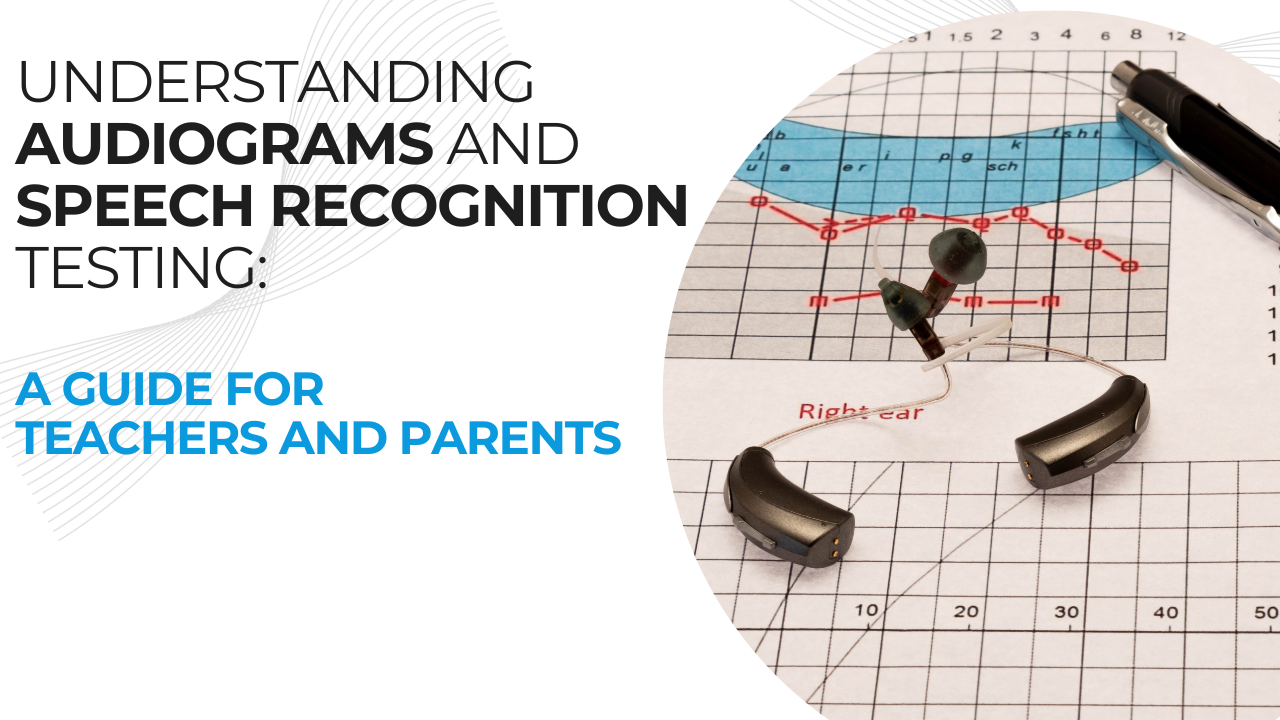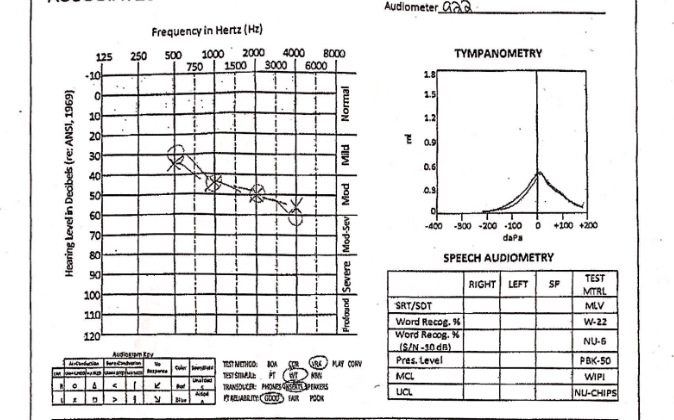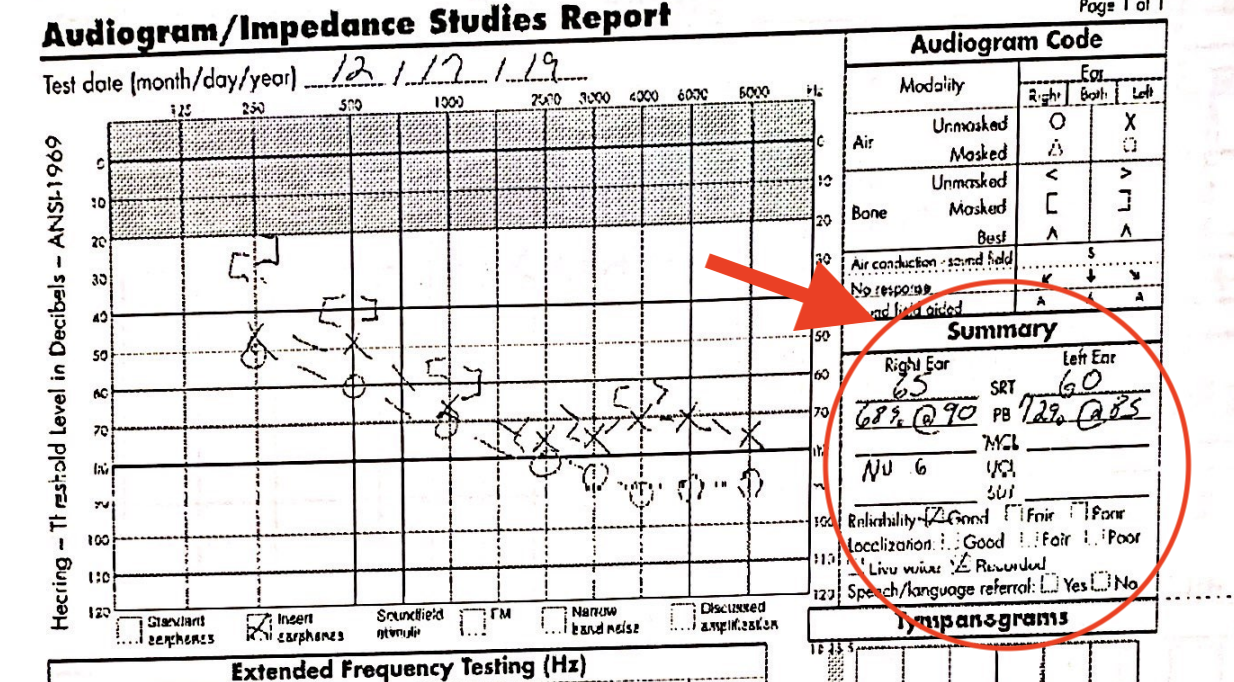Understanding Audiograms and Speech Recognition Testing: A Guide for Teachers and Parents of Children with Hearing Loss
Oct 10, 2023
Understanding Audiograms and Speech Recognition Testing: A Guide for Teachers and Parents of Children with Hearing Loss
Hearing loss, especially in children, can be a challenging journey for both parents and educators. Audiograms, crucial tools in the assessment of hearing loss, offer valuable insight into a child's auditory abilities. However, interpreting audiograms and understanding speech recognition testing results require a deeper understanding of the tests and their nuances.
Generally, Teachers of the Deaf have lots of training on meeting the educational needs of children with hearing loss, but limited training on reading audiograms, even though they are a valuable tool in unlocking understanding of their student's auditory access. Considering how many deaf/hard of hearing children are accessing their education primarily through listening and spoken language, with little to no access to sign language, understanding a child's auditory abilities is very important. And, it is also important for parents to understand so they can better advocate for their child's needs in and out of the classroom.
I was incredibly excited to host our 2023 October Meetup with Dr. Amanda Picioli. She's the chairperson of Communication Studies and Services at RIT/NTID, the largest technical college in the world for deaf and hard of hearing students. Dr. Picioli has a degree in Communication Disorders, is a Teacher of the Deaf and is a Doctor of Audiology. In summary, when it comes to understanding the impact of hearing loss on children and their educational environment, you can't get a better perspective than what she offers. Dr. Picioli presented the essential aspects of audiograms and speech recognition testing, empowering teachers and parents to support children with hearing loss more effectively. This blog post will summarize a few of the key points that I took home during the training her training, "The ABCs and XYZs of Audiogram Reading."
Afterward, I was able to connect with Dr. Sara Nuemann, from Hearts for Hearing out of Oklahoma City, OK. She helped provide further clarification on the information that an audiogram provides. I have added some of this information to this blog post, while still keeping it language friendly for those of us with limited background knowledge in audiology. Please note that the information in the blog post has been summarized and simplified, so please refer to the training The ABCs and XYZs of Audiogram Reading from The Online Itinerant and ask your audiologist for clarification and further explanation.
Understanding Audiograms: Decoding the Graph
An audiogram is a visual representation of a person's hearing abilities. It measures the softest sounds a person can hear across different frequencies. Audiograms categorize hearing loss into three types: conductive, sensorineural, and mixed. Understanding these classifications helps in identifying the specific areas of hearing impairment. The large graph of an audiogram represents the Pure Tone Average, which is only what can be heard, not what is understood. Please note this is an extremely over simplified explanation of Pure Tone Average - there is much more involved in getting this number. I recommend chatting with your audiologist for more information on how these numbers are identified. Speech Recognition scores unlocks what a child perceives, which is critical for a child who accesses their environment through listening and spoken language. We're going to dive into that more below. (Please note on the original posting of this blog on 10-11-23, I had used the term "understands." Dr. Neumann pointed out that children may not have the language and vocabulary for certain words and the tests are not comprehension tests. These tests ask a child to repeat what they heard, which may or may not be terminology they are familiar with. They goal is to see what speech sounds they are able to perceive beyond just the detection of sound itself.)

The image above shows a child's hearing loss without hearing aids. It should be noted that audiologists can also test how a child hears with their hearing technology, although I learned that this is not as straightforward as one might think. Aided results for speech recognition is more telling than pure tone average. The above audiogram does not indicate this child's speech recognition (note the blank section under Speech Audiometry), meaning this audiogram shows what tones this child can hear but does not show what they perceive, which is an even more important piece of the puzzle.
Crucial Speech Recognition Testing: More than Just Numbers
Speech recognition testing is a vital component of assessing a child's ability to understand speech. Audiologists can test this information and should include it on the audiogram. However, it's not just about the percentage score; it's about understanding the testing conditions and methods:
- Open vs. Closed Set: Closed set tests, where options are provided, are generally easier for children. Understanding this difference ensures accurate interpretation.
- Words vs. Sentences: Sentences offer context, making them more manageable for children to understand than isolated words, especially when assessing comprehension abilities. It should be noted, however, that while words point out what sounds students have access to, sentences give us insight on processing abilities. In many cases, children will do better on sentences than words because of context, but if they don't have the processing or vocabulary, they will likely struggle with sentences.
- Live vs. Recorded Speech: Live speech provides a natural experience but might lack consistency. Recorded speech, though standardized, may not match individual voice nuances.
- Considering Visual Cues and Noise: Environmental factors significantly impact speech recognition. Understanding how these elements influence testing results is crucial.
If a child scores low on their speech recognition testing, this is very telling of how well they will be able to access their educational environment. In this training by Dr. Picioli, it was pointed out that hearing aids do not help speech recognition. Hearing aids make things louder, not clearer. If a child is struggling to decipher what they are hearing during an audiology appointment, which generally takes place in a sound proof booth, during a short, highly focused time period, it will be even more challenging for them to decipher their peers in a social setting or learn new concepts in an academic setting all day long. Low speech recognition scores is a red flag and if a child struggles with speech recognition, additional ways to provide access should be considered.

After the training, I was inspired to look at some of my past student's audiograms and see what I could decipher from them that I couldn't decipher before the training with Dr. Picioli. It should be noted that this is an example of unaided word recognition testing. This particular audiogram shows a speech recognition score of 68% at 90 dB. This means that the audiologist turned up the dial to 90 dB. This means she could correctly understand and repeat 68% of the given words presented at the frequency of 90 dB. on the NU6, which was an open set of words. Since it was an open set and single words, this represents a clear picture of what this child could understand when it comes to auditory access. (These tests were more thoroughly discussed in our training by Dr. Picoili.) I should mention that there is much to be said about this information. Check out the training or consult with your audiologist to dig deeper into this.
It should be noted that speech recognition testing is not always completed during an audiology appointment. In addition, if the testing is done, the testing conditions are not always defined. Without this information, sadly, the information we can use from the audiogram is limited. When this information is not provided on the audiology report, it's appropriate to follow up with the audiologist to clarify the information. In addition, it's a good idea to request speech recognition testing ahead of time to ensure that it's completed. The older the child, the more challenging the testing should be.
Empowering Education and Support
By delving deeper into audiograms and speech recognition testing, teachers and parents can create a supportive environment for children with hearing loss. Understanding the nuances of these assessments ensures tailored educational strategies, fostering a positive learning experience for every child. There are a few things that you can request during audiological testing, such as speech recognition testing, which shows how much a child understands, and aided results, which shows how the child benefits from hearing aids. Sharing functional information from the school environment to the audiologist is helpful in providing a more broad picture of how the child functions within their educational placement. Information that is valuable to the audiologist includes; indication that certain voices or noises are too loud or too quiet for the child, whether or not the child can consistently identify all the Ling Sounds, and if the child can consistently discriminate differences in like-sounding words. Providing this information to the clinical audiologist is helpful when it comes to programming hearing aids to maximize the child's auditory access.
By understanding the challenges associated with interpreting audiograms and speech recognition testing results, educators and parents can advocate for the information needed to create a tailored support system for children with hearing loss. Together, through collaboration and informed decision-making, we can be empowered to provide an environment where these children can thrive and navigate the world with confidence and success.
Dr. Picioli's training was offered through the Online Itinerant. You can learn more about the trainings provided for parents and professionals through the Online Itinerant at www.TheOnlineItinerant.com.
A special thank you to Dr. Amanda Picioli and to Dr. Sara Neumann for helping to understand the ABCs and XYZs of audiogram reading!
